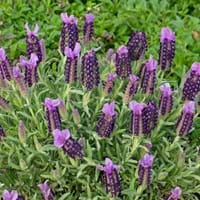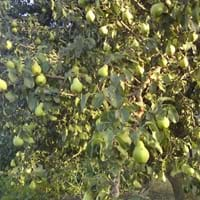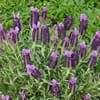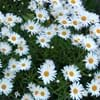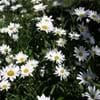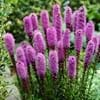Life Span
Annual and Perennial
Perennial
Origin
Mediterranean
Hybrid origin
Types
Not Available
Not Available
Habitat
Mediterranean region
Hedge, hedge rows, Woodland edges
USDA Hardiness Zone
8-9
4-9
Sunset Zone
4, 5, 6, 7, 8, 9, 10, 11, 12, 13, 14, 15, 16, 17, 18, 19, 20, 21, 22, 23, 24
Not Available
Habit
Cushion/Mound-forming
Upright/Erect
Flower Color
Purple, Blue Violet, Plum
White
Flower Color Modifier
Bicolor
Not Available
Fruit Color
Not Available
Light Red, Orange, Yellow
Leaf Color in Spring
Sea Green, Gray Green
Green
Leaf Color in Summer
Sea Green, Gray Green
Green
Leaf Color in Fall
Sea Green, Gray Green
Green
Leaf Color in Winter
Light Green
Light Green
Leaf Shape
Long Narrow
Elliptic
Plant Season
Spring, Summer, Fall, Winter
Spring, Summer
Sunlight
Full Sun
Full Sun, Partial Sun
Type of Soil
Loam, Sand
Loam, Sand
The pH of Soil
Acidic, Neutral
Acidic, Neutral
Soil Drainage
Well drained
Well drained
Bloom Time
Late Spring, Early Summer, Summer
Spring
Repeat Bloomer
Yes
Not Available
Tolerances
Drought
Drought
Where to Plant?
Container, Ground, Pot
Ground
How to Plant?
Seedlings
Seedlings
Plant Maintenance
Medium
Medium
Watering Requirements
Average Water Needs
Average Water Needs, Do not water frequently
In Summer
Lots of watering
Lots of watering
In Spring
Moderate
Moderate
In Winter
Average Water
Average Water
Soil pH
Acidic, Neutral
Acidic, Neutral
Soil Type
Loam, Sand
Loam, Sand
Soil Drainage Capacity
Well drained
Well drained
Sun Exposure
Full Sun
Full Sun, Partial Sun
Pruning
Remove damaged leaves, Remove dead branches, Remove dead leaves
Remove damaged leaves, Remove dead branches, Remove dead leaves
Fertilizers
All-Purpose Liquid Fertilizer
All-Purpose Liquid Fertilizer
Pests and Diseases
Grasshoppers
Red blotch
Plant Tolerance
Drought
Drought
Flower Petal Number
Single
Single
Fragrant Bark/Stem
Yes
No
Foliage Texture
Fine
Medium
Foliage Sheen
Matte
Glossy
Attracts
Bees, Butterflies, Hummingbirds
Not Available
Allergy
Headache
Not Available
Aesthetic Uses
Showy Purposes
Not Used For Aesthetic Purpose
Beauty Benefits
Not Available
Not Available
Environmental Uses
Air purification
Air purification
Medicinal Uses
Cold, Nausia, Treating fever, Wounds
Astringent, Febrifuge
Part of Plant Used
Flowers, Seeds
Flowers, Stem
Other Uses
Air freshner, Used as an insecticide
Planted in shelterbeds, Used for woodware
Used As Indoor Plant
Yes
No
Used As Outdoor Plant
Yes
Yes
Garden Design
Bedding Plant, Container, Cutflower, Feature Plant, Herb, Vegetable, Mixed Border, Rock Garden, Wall
Edible, Fruit / Fruit Tree
Botanical Name
Lavandula Stoechas
PYRUS 'Ayers'
Common Name
Topped Lavender, Spanish Lavender
Ayers Pear, Pear
In Hindi
Spanish Lavender
Ayers Pear
In German
Spanish Lavender
Ayers Birne
In French
Spanish Lavender
Ayers Poire
In Spanish
Spanish Lavender
Ayers pera
In Greek
Ισπανικά Λεβάντα
Ayers Pear
In Portuguese
Spanish Lavender
Ayers Pear
In Polish
Spanish Lavender
Ayers Gruszka
In Latin
Spanish Lavender
Ayro Orbis
Phylum
Magnoliophyta
Tracheophyta
Class
Magnoliopsida
Magnoliopsida
Family
Lamiaceae
Rosaceae
Clade
Angiosperms, Asterids, Eudicots
Angiosperms, Eudicots, Rosids
Tribe
Lavanduleae
Not Available
Subfamily
Nepetoideae
Not Available
Difference Between Spanish Lavender and Ayers Pear
If you are confused whether Spanish Lavender or Ayers Pear are same, here are some features about those plants to help you choose better. Many people think that these two plants have the same characteristics, but one can see Spanish Lavender and Ayers Pear Information and learn more about it. Fertilizers required for proper growth of Spanish Lavender are All-Purpose Liquid Fertilizer, whereas for Ayers Pear fertilizers required are All-Purpose Liquid Fertilizer. Hence, one should know the basic difference between Spanish Lavender and Ayers Pear if you are planning to have them in your garden to enhance its beauty.
<
Flowering PlantsImportance of Spanish Lavender and Ayers Pear
Want to have the most appropriate plant for your garden? You might want to know the importance of Spanish Lavender and Ayers Pear. Basically, these two plants vary in many aspects. Compare Spanish Lavender and Ayers Pear as they differ in many characteristics such as their life, care, benefits, facts, etc. Every gardener must at least have the slightest clue about the plants he wants to plant in his garden. Compare their benefits, which differ in many ways like facts and uses. The medicinal use of Spanish Lavender is Cold, Nausia, Treating fever and Wounds whereas of Ayers Pear is Astringent and Febrifuge. Spanish Lavender has beauty benefits as follows: Not Available while Ayers Pear has beauty benefits as follows: Not Available.
Compare Facts of Spanish Lavender vs Ayers Pear
How to choose the best garden plant for your garden depending upon its facts? Here garden plant comparison will help you to solve this query. Compare the facts of Spanish Lavender vs Ayers Pear and know which one to choose. As garden plants have benefits and other uses, allergy is also a major drawback of plants for some people. Allergic reactions of Spanish Lavender are Headache whereas of Ayers Pear have Not Available respectively. Having a fruit bearing plant in your garden can be a plus point of your garden. Spanish Lavender has no showy fruits and Ayers Pear has showy fruits. Also Spanish Lavender is flowering and Ayers Pear is not flowering . You can compare Spanish Lavender and Ayers Pear facts and facts of other plants too.
